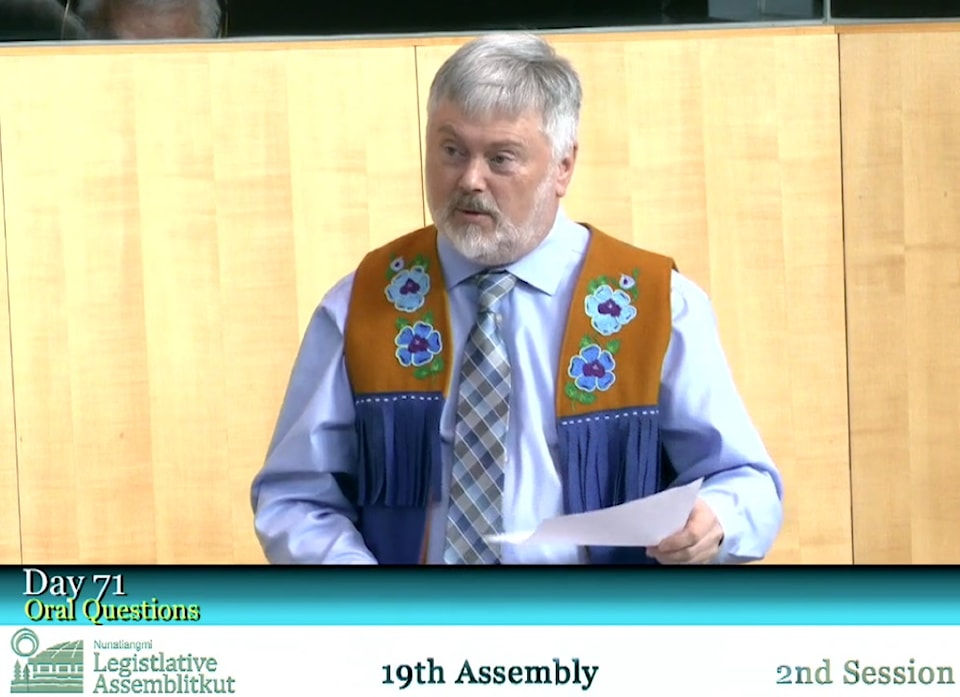The GNWT recently funded suicide prevention programs but questions remain over supports for after-care among people who have attempted suicide.
Frame Lake MLA Kevin O’Reilly told members of the legislative assembly on March 30 that one of his constituents informed him of the limits of health supports for individuals with experience of suicide.
The person reached out after Health Minister Julie Green announced on March 9 that her department had allocated $225,000 for a community suicide prevention fund.
The fund will provide $45,000 per project for Indigenous governments and non-governmental organizations to develop and deliver community-based suicide prevention activities.
Gaps in support
But O’Reilly said his constituent wrote to him about her family’s experience of suicide that included issues of stigma, lack of intensive counselling at the community level and follow-up after suicide attempts.
“My constituent stressed the need for continuing care after a suicide crisis as key to preventing chronic, personal cycles of suicide attempts. Individualized after-care plans and better family supports are needed,” said O’Reilly.
He then listed several supports such as the Community Counselling Program, Child and Youth Care Counsellors and “stepped care” models offered through Health and Social Services.
NWT suicide rate higher than Canada
However, even with all of those programs the NWT “suffers rates of suicide at alarming levels compared to other territories and provinces,” O’Reilly said.
The NWT Health and Social Services System Annual Report 2019-2020, published on Nov. 5, 2020 doesn’t specifically have rates on suicide, but it does offer statistics on self-injury as an indicator of suicidal behaviours.
The rate of self-harm hospitalizations has increased from about 15 per 10,000 per year in the latter half of the 2000s to an average 24 per 10,000 in the last five years, the report said.
The current rate in the territory – 28 per 10,000 – is four times higher than the national rate of 6.7 per 10,000 (2018-19).
RELATED REPORTING: Data on NWT residents’ poor health presented along with improving long-term trends in GNWT report
The NWT Health Status Chartbook from 2019 shows the suicide rate for the NWT was at 2.3 per 10,000 in 2013-2017. It was 1.2 for Canada as a whole.
Addressing Green, O’Reilly asked what the normal practice with for after-care plans for people who have attempted suicide, how the plans are monitored and the supports available for affected families and communities.
Individual supports after suicide attempts
Green responded that following a suicide attempt, the person is assessed to determine if they need medical treatment or if they would benefit from certification under the Mental Health Act.
The non-hospital route involves speaking with the individual and doing risk assessment. They’re given a safety plan that includes community-based supports and referral to follow-up services such as the Community Counselling Program or psychiatry.
Psychiatry plans are tailored to individual needs, Green said, and it is up to them to follow through with the plans.
The stepped care approach eliminates waiting lists, she added, making it possible for people to access a same-day appointment or return the next day if needed.
Family and community support
It also involves online supports through the Strongest Families Institute that provides care for families with children and young people.
“What we're trying to do here is provide a spectrum of supports,” she said.
On the community level, the GNWT has formed a suicide prevention and crisis response network with the Northwest Territories Health and Social Services Authority (NTHSSA).
Following a critical incident, the community can reach out to the health authority to ask for help and there is a conversation about what help is needed. NTHSSA then seeks those supports which could be one-on-one counselling or outreach support and tries to meet the community’s goals.
“This system is in place now. I know it was recently used in connection with an incident in Tuktoyaktuk. What happened there was that a counsellor flew in from Paulatuk to assist the community, and there were people who flew in from Yellowknife to assist the community,” Green said.
Community suicide prevention fund
The minister said there has already been a lot interest in the community suicide prevention fund in the three weeks since it was launched and groups have finalized proposals.
Although $45,000 is the limit per community, not every group will apply for that amount and some proposals might call for significantly less than that, Green said.
Green added that if more funding is required the GNWT would contact Health Canada for more money.
